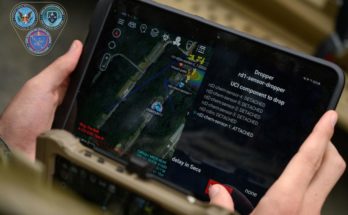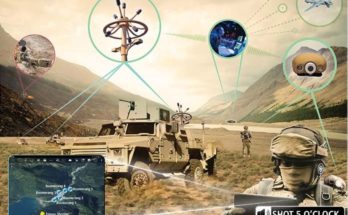This excerpt from AFCEA’s Signal Magazine discusses TAK’s use:
The squadron relied heavily on WinTAK to achieve near-instantaneous communication with the regiment, which was testing the Android Tactical Assault Kit as part of the integrated tactical network suite. A cellular data connection using Wi-Fi was the primary connection point to the network because it provided reliable communications with subordiante troops.

The squadron used FM and joint capabilities release systems with some success for decision-making on the move and synchronizing operations but had no means to execute collaborative planning while dispersed. WinTAK facilitated distributive planning and acted as the common operating picture for the regiment. This approach, along with its near-instantaneous and reliable chat function, made WinTAK the unit’s primary means of communication while traveling to and from Lithuania. WinTAK chat provided immediate communication to adjust routes, plan refueling operations, recover assets, shift personnel from broken vehicles and assign maintenance duties. Using this method, the maintenance team helped troubleshoot problems, acquire parts and prioritize repairs before arriving at the next stop.
As the squadron attacked in conjunction with the regiment, WinTAK provided position location information from adjacent units through the integrated tactical network. It also enabled the squadron to update the regimental common operating picture in near-real time without establishing the satellite transportable terminal for the upper tactical internet (TI). Common graphics pushed through WinTAK allowed the squadron to negotiate the wet gap crossing efficiently, despite unforeseen challenges on the far side. Rifle troops flew WinTAK forward on the air assault, which provided critical reporting when FM networks failed.
Even with a very limited number of systems, WinTAK greatly enhanced decision-making on the move and improved the ability to synchronize operations. However, WinTAK did not fulfill all the functions of command post operations and was only tested by reaching the cloud through a cellular data connection for beyond line-of-sight communication.
Establishing the upper TI takes time and infrastructure, creating a significant headquarters signature that can be targeted. While WinTAK improves the command post function, it does not replace the upper TI that enables Command Post of the Future and Distributed Common Ground System–Army systems to feed real-time operational and intelligence images. The upper TI also enhances the Advanced Field Artillery Tactical Data System’s ability to conduct long-range digital fires when outside the line-of-sight communication range.



